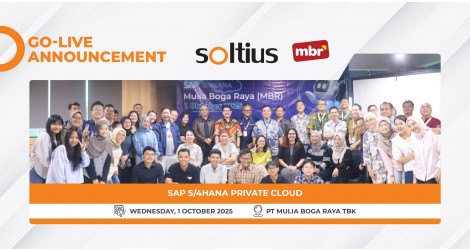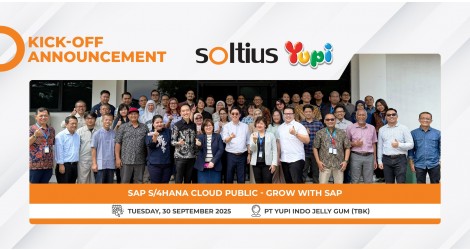How To Manage Diversity To Power Innovation – And Why You Should

Can a diverse team create more revenue through innovation than a less-diverse team can? That question has been difficult to answer. But, according to a Boston Consulting Group study, the answer seems to be yes. Innovation has never been more crucial to business success and survival. So, understanding – and managing – the relationship between diversity and innovation is critically important for any software development and business transformation team, like mine.
“Everything we hear is an opinion, not a fact. Everything we see is a perspective, not the truth.”
― Marcus Aurelius
The push to build diverse teams is rooted in the assumption that diverse teams come up with novel solutions because they bring together different perspectives. That’s logical and appealing. But is it the whole story? Not in my experience. Sure, each person is shaped by their experiences. And getting people together who bring those unique perspectives can lead to better results. But how do you activate the potential of a diverse team to be more innovative?
4 types of diversity drive innovation
The first step is understanding what kind of diversity drives innovation. Too often, diversity efforts are limited to changing male-to-female ratios in management. But according to the BCG study, four types of leadership diversity are correlated with increases in revenue through innovation: industry background, country of origin, career path, and gender. Academic background had no impact. And surprisingly, age diversity had a negative impact. According to the study, these effects are greatest in complex companies – those with multiple revenue streams and products lines that operate across industries. So, in an age of increasing complexity, getting the “diversity mix” right in the leadership team could spell the difference between disruptive innovation or merely business disruption.
That doesn’t mean we should scale back on gender diversity efforts. In fact, companies with more female leaders (i.e., eight out of 20 being female) got 34% of their revenues from new products and services, compared to only 25% at companies with fewer female leaders (only one in 20 being female.)
How to activate the creativity of a diverse team
Let’s put aside the fact that we need to recruit and promote for diversity. It’s simply a given that hiring and promotion practices must take diversity into account. But what do you do with a diverse team once you’ve built it? That’s the question.
According to Helena Morrissey, a prominent UK business leader who is working to create more inclusive workplaces, “…the best, most creative teams are likely to be diverse. But once people are in the door they are often encouraged to just fit in with the status quo.” Absolutely true. Why? Because established businesses typically safeguard their established business models, chase profitability in mainstream markets, and focus on improving products and services for the most demanding and most profitable customer segments. That’s just good business sense – in the short-term.
Over the long-term however, it can create a culture where outside-the-box thinkers may get shunted to the sidelines. In that kind of culture, people figure out that maintaining the status quo offers more perks. That kind of culture can leave the door wide open for “disruptors” – smaller companies with fewer resources to challenge established businesses by targeting overlooked segments. Entrants to a market are not burdened with maintaining the status quo.
So, how do you activate the creativity of a diverse team in complex companies? You do it by creating an empowering workplace culture.
4 ways to create an empowering culture
1. Reward risk-taking and nay-saying
The most visible way to do that is to encourage team members who routinely question the status quo. Typically, a team member who doesn’t immediately buy into a group’s thinking is viewed as a nuisance. Don’t give into this impulse. Encourage this person. Try to understand why they are disagreeing. Be surprised by how much creativity flows when this person’s dissenting voice has space. It’s this person who will challenge the group to think in new directions.
2. Create a gender-empowered workplace
All leaders need to play a role in building a culture that embraces women, encourages them, and grooms them to become future leaders. What they don’t need to do is reinforce a culture that rewards typical “male” models of dominance and aggression – even in women. Recognize that being a female leader in a male-centric business world requires a special sort of strength, confidence, perseverance, and tenacity. Be sure your team values the entire spectrum of personality traits, even those typically described as feminine traits and often not valued in business, like empathy, sharing, patience, agreeableness, even nurturing. That’s what creates connection, collaboration, and ultimately space for creativity to flow.
3. Create a culture of open communication through feedback
In my team, people are encouraged and supported to give feedback to their direct manager. We talk about results in an atmosphere that encourages respectful openness. We do cross-team communication training and, most importantly, the leadership team encourages people to voice their thoughts, ideas, and perspectives on a regular basis. We listen and we model respect for each other.
4. Encourage respectful conflict
When you put product owners, solution owners, software engineers, marketing experts, and operations people together, you are bound to get conflict. Seek it out! Don’t try to quash it. Teams that have diverse skillsets and operate end-to-end will get into heated discussions because experts are passionate about their domains. Creative problem-solving and invention thrives in this environment, but only when it’s built on a foundation of respect for the knowledge, expertise, and perspectives each person brings.
When diversity threatens to stifle innovation, enterprise intelligence can help
There’s one type of diversity that can actually stifle innovation: age diversity. According to the BCG study, leadership teams with large age ranges are less innovative. SAP has long recognized cross-generational conflict as an issue for businesses. We know that the ways people want to develop their careers, manage their time, balance their work, and be compensated depend greatly on their age. So, software solutions that help companies get the analytics they need to understand cross-generational needs is a critically important area of HCMapplication innovation. Analytics can help businesses understand the needs and values of their diverse workforce. Based on that understanding, businesses can build the right employee experience.
It’s becoming obvious that diversity has moved from being a “special interest” issue to a central driver of business success. And because we can’t simply recruit our way to diverse teams, leaders need to focus on creating the right environment for their diverse teams to thrive.
Let's Soltius Help Your Company RUN Better
contact us : 021-29345925 / sales@soltius.co.id.
Other News


